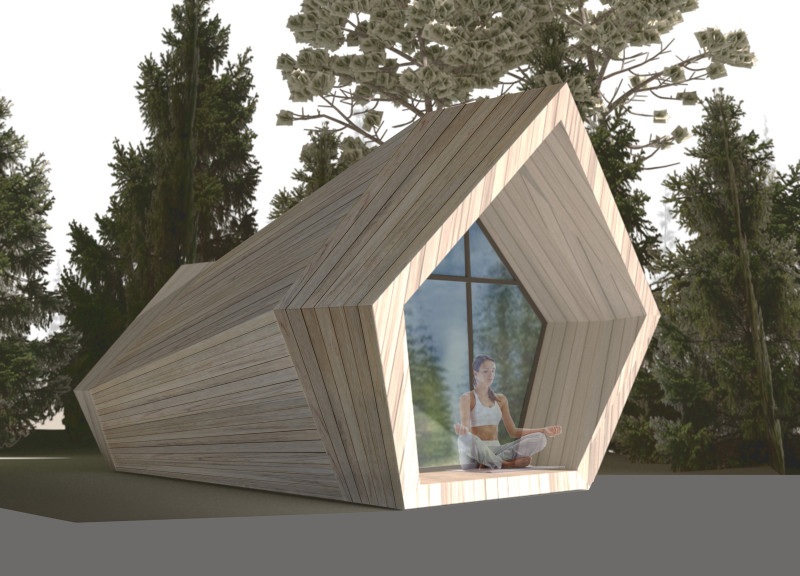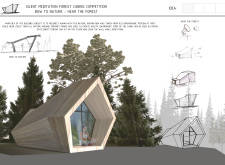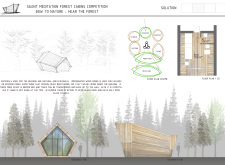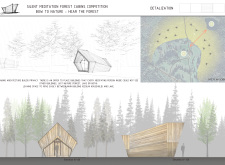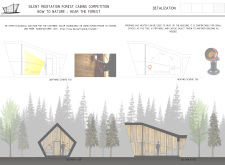5 key facts about this project
The Silent Meditation Forest Cabins project is set in a natural landscape meant to help people reconnect with their surroundings. The cabins provide a quiet space for meditation and reflection. The design takes inspiration from an old gramophone, encouraging occupants to first listen to their own thoughts before turning their attention to the sounds of nature.
Architectural Form and Layout
The cabins feature a minimalist design that uses simple shapes to create a calm atmosphere. Each structure is carefully placed to ensure privacy, allowing users to focus on their experiences without distractions from nearby buildings. This thoughtful arrangement fosters a strong connection to the surrounding forest, enhancing the meditative experience.
Functional Design
Inside the cabins, spaces are designed for essential activities like sleeping, meditating, and eating. The layout supports flexibility. Furniture, such as beds and tables, can be moved against the walls for more open space. This design choice makes the cabins practical for different activities, allowing individuals to adapt the environment according to their needs.
Materiality and Sustainability
The building materials reflect a commitment to ecological values. Impregnated wood siding is used for both the outer walls and the interior finishes. This choice not only emphasizes sustainability but also creates a warm, inviting environment. The natural textures of the wood help to connect the cabins to the landscape, making the experience more harmonious.
Connection to Nature
Large sliding glass doors enhance the relationship between indoor and outdoor spaces. During warmer months, these doors can be opened to merge the cabin with the forest outside. This feature allows natural light to brighten the interiors and encourages occupants to engage with the sights and sounds of nature, enriching their time spent in the cabins.


